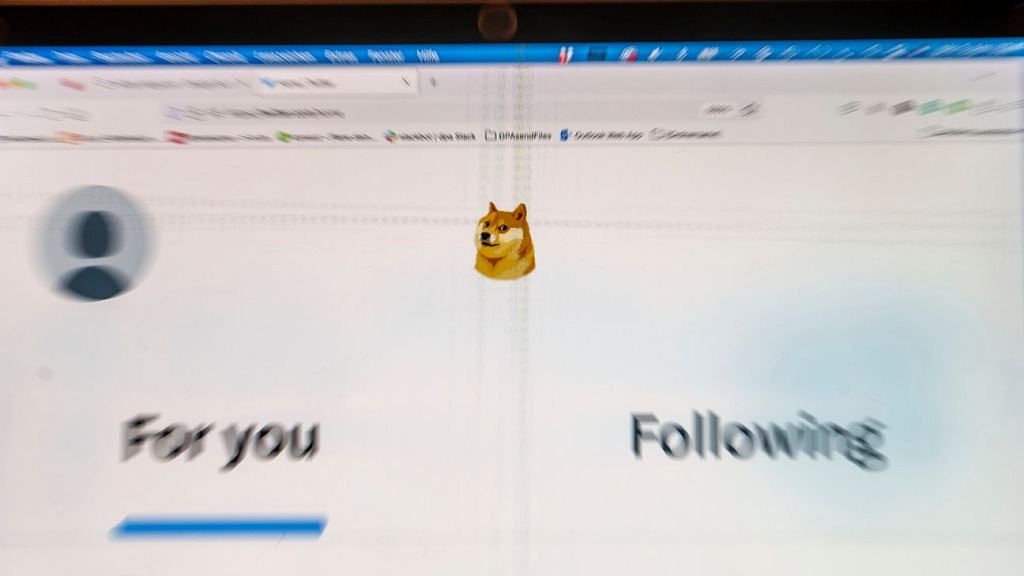
The purge siren was more like a whimper.
As verified Twitter users braced for the Elon Musk–run social media company to begin removing verification badges en masse over the weekend, the Twitter product team appeared focused on something else entirely: replacing Twitter’s blue bird icon on Monday with that of a Shiba Inu, the dog associated with the Doge meme and cryptocurrency Dogecoin.
Doge Twitter is emblematic of Musk’s chaotic and unfocused reign over Twitter, where features are rolled out haphazardly with little to no notice, select organizations like The New York Times are punished (i.e., lose their check marks) on a whim based on Musk’s uneven standards and basic site functionality — remember when users couldn’t even tweet? — isn’t a given. Aside from an “as promised” tweet by Elon, the company never even officially acknowledged why it embraced Doge as an icon, leaving it as another random moment in the Musk era.
The bloodbath that wasn’t is likely because there is no method for Twitter to remove verification badges en masse, as The Washington Post reported. In a since-deleted tweet on April 2, Musk said he would be giving “a few weeks grace” to legacy verified users to sign up for Twitter Blue “unless they tell they won’t pay now, in which we will remove [their verification badges],” which appeared to be the case with The New York Times’ main account. (A representative for the Times did not respond to requests for comment on whether the outlet has seen a decrease in engagement or reach after losing its verified status.)
But as of early this week, most verified users have kept their badges, with many expressing no interest in paying for Twitter Blue, the $8/month subscription service that will verify any user with a phone number and offer other perks like a decrease in ads and a boost in visibility across the platform. If anything, a Twitter Blue subscription has become somewhat of a scarlet A on the social platform to some, with some legacy users even begging for their blue checks to be removed and 39,000 users following an account that shares tools on how to weed out and block Twitter Blue subscribers.
If Musk was also counting on celebrities and top creators to absorb the $8 monthly fee in exchange for protecting their verified status, he thought wrong. “I am not paying for a blue check. That money could (and will) be going towards my extra hot lattes,” tweeted Dionne Warwick.
On the organizational side, major publications like The New York Times, The Washington Post and The Los Angeles Times have all said they will not pay the $1,000/month fee to join Twitter’s verified organizations service, which gives business accounts a gold verification badge and adds an affiliate badge (a smaller version of the main account’s profile picture) to its affiliate accounts. If that was confusing to read, that’s because it is: a visual nightmare of badges next to badges, all of which mean next to nothing now.
It’s a pay-for-play strategy that has not eked out much success for the cash-strapped company, as roughly 3.6 percent of legacy verified users have signed up for Twitter Blue, according to one estimate from the software developer Travis Brown, who has been tracking changes to users’ verification statuses. (Twitter has not publicly released its number of Twitter Blue subscribers.) And those who have offered to pay tend to have smaller followings on the platform, as some 49.1 percent of Twitter Blue subscribers have fewer than 1,000 followers, based on Brown’s analysis.
A separate study from the web analytics firm SimilarWeb found that of the 2.6 million people who checked out the Twitter Blue sales page on their desktop in March, 116,000 — or about 4.5 percent — signed up for a subscription.
Perhaps as an attempt to mask the low adoption numbers, Twitter also rolled out updated language on Monday to note that those with verification badges may have subscribed to Twitter Blue or were legacy accounts; previously, users were able to identify who was a Twitter Blue subscriber vs. a legacy user.
For his part, Musk has not addressed the elephant in the room: that it appears few legacy users are saying they’ll pay for Twitter Blue. Instead, the mercurial CEO has spent the day laughing at his own jokes, sharing recycled meme after recycled meme.













